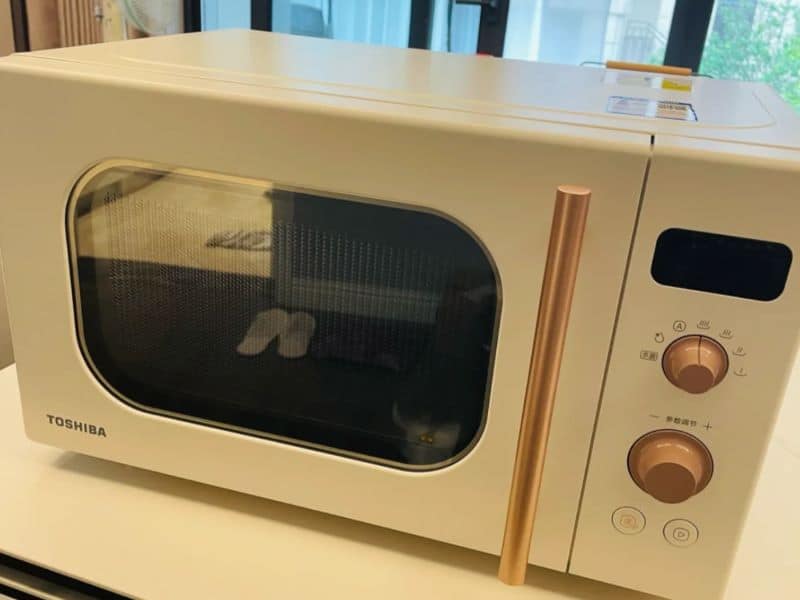While microwaves can be a convenient gadget to have within the home, they may not be the best option for melting candle wax.
According to the U.S. Department of Agriculture (USDA), warming up food and liquids in the microwave can lead to uneven warming. This means that while it is possible to melt wax in a microwave, it may not melt evenly. Since temperature plays a huge role in the process of making candles, it would be best to use a more reliable heating method instead of a microwave to melt wax.
But if you insist on using the microwave, there are precautions to keep in mind. Keep reading to learn more about this delicate process and alternative heating methods.

Can I Safely Melt Candle Wax in the Microwave?
Based on my research, soy wax in flake form is the safest kind of wax to melt in the microwave. But you’ll need to use a microwave-safe container and protect your hands when removing the melted wax from the microwave.
How to Melt Soy Wax in the Microwave
The video below details the process of carefully melting soy wax in the microwave. While they’re using soy wax flakes, I would think that pellets would also work well due to their small size. I would caution against using a thick chunk of soy wax.
There is only so much wax that you can melt in the microwave at once. As noted in the video, this method is best for making a small batch or testing your soy candle formula.
Materials Used:
- Plastic microwave-safe container
- 16 oz soy wax flakes
- 1 oz fragrance oil
- 3 – 8 oz containers
- 3 wicks
- 3 wick bars
- 3 warning labels
- 1 metal palette knife or spoon for stirring
- Scale
- Thermometer
After taring your container on the scale, weigh out 16 oz of wax flakes. Microwave the wax for five minutes.
They used a 1000-watt microwave. If you’re not sure of your microwave’s wattage, check the label that’s usually stuck on the inside of the microwave door. If you can’t find it, use this method explained by the USDA.
If you have a high wattage microwave, try starting at two or three minutes, and then add more time if the wax hasn’t melted. Lower wattage microwaves may take longer to melt the wax.
In any case, be sure to stay in the kitchen and keep an eye on melting progress. You don’t want the wax to overheat.
If you find that your soy wax isn’t completely melted, simply stir it, and then return it to the microwave, warming it in shorter intervals until it’s completely melted.
Tip: Always carefully handle the melted wax – covering your hand with an oven mitt.
Depending on the type of fragrance or essential oil you’re using, you may want to test the temperature of the wax prior to pouring it in. Once your wax is at the appropriate temperature, stir in your fragrance oil for a full two minutes to make sure it’s fully integrated.
After pouring the wax into your containers, allow it to cool, harden, and cure before testing your candle. For more details, you may want to watch the video:
If you’re melting a soy wax blend in the microwave, be sure to stir it well prior to adding any fragrance oils.
Can I Melt Paraffin Wax in the Microwave?
I would strongly caution against attempting to melt paraffin wax in the microwave. There are two main reasons for this:
The Wax Simply Won’t Melt
Firstly, paraffin wax does not consist of any water. But water absorption, leading to frequency vibration, is what helps to cook food, or in this case, melt wax.
In the case of paraffin wax, there aren’t any molecules in it to respond to microwave frequencies, so it doesn’t melt. There’s nothing for the energy to connect to.
You Can Damage Your Microwave
Running a microwave with paraffin wax in it is similar to running the microwave empty.
Microwaves are electromagnetic radio waves that transfer energy to the water molecules of the food or other substance that’s inside. The molecules begin to vibrate, which is what generates warmth for the food or substance.
When empty, or filled with a substance that can’t absorb this energy, the waves basically bounce around and return to the source of the electromagnetic radio waves. In response, a microwave can overheat and shut down.
If this happens for a prolonged period of time or on a frequent basis, it can cause permanent damage to the microwave.
Worst case scenario, running a microwave while empty (or with a substance inside of it that lacks moisture, i.e., paraffin wax), it can potentially ignite.
More Precautions Against Melting Wax in the Microwave
While microwaves can efficiently reduce warming times, there are additional points to consider – cold spots and hot spots.
I think this is particularly true if you are attempting to melt candle wax chunks. Since paraffin wax should not enter your microwave, these points are related to soy wax or soy wax blends.
Potential Cold Spots
While this doesn’t present as much of a safety concern for wax as it would food, it’s still something to keep a watch for.
Microwaves are wonderful inventions, but they don’t always evenly warm substances, especially when the substance is dense.
In the case of soy wax chunks, you might notice cloudy clumps if your microwave-safe container is transparent. If this happens, you will want to stir the wax to help move the heat around, and then return it to the microwave.
Continue to watch it so that the wax doesn’t overheat.
Unsuspected Overheating
This has actually happened to me before. I warmed water in the microwave, removed it, and then when I began to stir the water, it erupted as if it was in a fierce boil on the stove.
I’m not sure if it was a matter of superheating or a hotspot, but it was totally unexpected.
There wasn’t any movement when I pulled the mug out of the microwave. It wasn’t until I began to stir it that the rolling bubbles caught me off guard and even popped up on my hand.
The USDA explains that at high temperatures, heat can build up an inch or two below the surface. This is why you have to be really careful when removing the melted wax from the microwave.
If possible, warm the wax in short intervals and stir in between heating to help distribute the heat more evenly.
Takeaway: Warming wax in the microwave can lead to unpredictable results. If you must use the microwave, pay close attention and cautiously handle the container and hot wax.
What’s a Safer Way to Melt Wax?
Microwaves can be unpredictable. You can’t control internal temperatures. And there’s no way of knowing whether your wax is getting too hot.
In some instances, this can lead to injury. But there are safer ways to warm your wax when making candles.
Double-Boiler
This is by far the safest method when melting wax in small batches. It’s also an easy process to implement.
You would either need two pots – one larger than the other. Or, a medium- to large-sized pot plus a pouring pitcher. Alternatively, you can order a double-boiler set specifically for candle making.
Fill the larger pot with water and allow it to heat up. Place your wax inside the smaller pot or pouring pitcher, and then sit it inside the pot filled with hot water.
Consider the size of each pot and/or pitcher. And be sure to follow manufacturing instructions when melting your wax. It’s also good to have a thermometer on hand to avoid overheating the wax.
Using this method, it’s a lot easier to monitor the temperature of your wax. If fragrance is added to wax that’s too hot, the scent is released in the steam and won’t be contained in the wax as it hardens.
Wax Melter
If you plan to make candles in larger quantities, then a wax melter might be the more efficient option for you. They hold far more wax, even extra large containers holding 12 lbs of wax.
And there’s a spout so that you can easily pour the melted wax into your containers. Most importantly, there’s a temperature control gauge that lets you melt the wax according to its type and temperance.
In Conclusion
It’s possible to use the microwave to melt candle wax. But it’s best to only melt soy wax in the microwave. It’s a slower process, and you can only melt small quantities of wax at a time.
Since microwave temperatures are unpredictable, the safest route is to use a double-boiler or wax melter when melting candle wax.
Read more:
